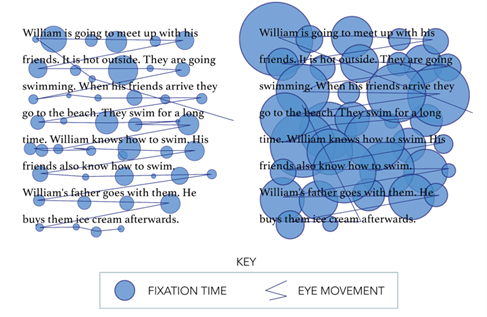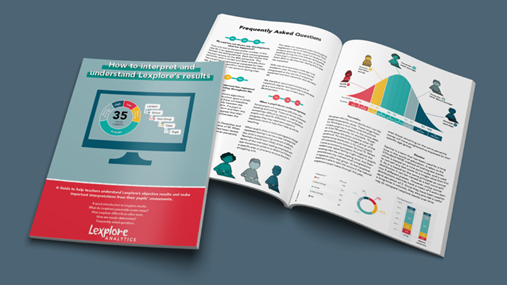Lexplore
1. What is Lexplore?
Lexplore is a detection tool that combines AI and eye-tracking technology in order to scan students at risk of dyslexia. The assessment method is based on decades of longitudinal study of reading and writing at the Karolinska Institute in Stockholm and builds on the works of researchers that were able to show how eye movement recording could predict which students would experience difficulties after only 30 seconds of reading. According to Lexplore, these detection models perform at a very high accuracy level (around 96 %) and as the software uses machine learning for detection and optimization, the algorithms continue to improve and “learn” from new data with the increased number of users. Based on the Lexplore results, teachers are recommended to work with children at risk through an intervention package that aims to support all students, both emergent and fluent readers.

2. How can Lexplore make learning more personalized?
Detecting reading difficulties in young children is a prerequisite for early interventions that can support the needs of individual children in becoming competent readers. As these difficulties present themselves very differently in each child, this is a difficult task even for very experienced teachers. Lexplore intervention is based on each student reading two short text passages from a screen, one silently and one out loud. This is followed up by some comprehension questions. By tracking readers’ eye movements, the Lexplore software analyses a child’s reading skills across what is defined as key components, determining their attainment, and highlighting potential difficulties in a matter of minutes. The collected data of each student’s performance is uploaded on a cloud-based platform and analyzed through machine learning algorithms.
The results provided back to teachers contain a percentile score, reading age, year level equivalent and standard score for each student. The software also provides a “sticky words list” that shows in what way students struggle to decode specific words. Individual scores are visualized and displayed alongside school average and national average for each reading component, e.g. reading speed and fixation time. In sum this means that teachers can differentiate their teaching while giving the extra support to students that struggle with their reading. Altogether this means teaching can be more personalized in accordance with all students’ needs.

3. What to consider when implementing Lexplore?
Detecting reading difficulties is only the first step in the long and challenging task of supporting early literacy in all children. It also requires teachers to both understand and use the results from the screening in a proper way. The Lexplore detection tool is accompanied with a guide that contains materials which helps teachers to better understand the results, so they can make improved interpretations when it comes to their students’ own assessments. explore also provides specific intervention packages, such as Lexplore Intensive, to support all students, both emergent and fluent readers, inline with their attainment level. With regular testing schools can closely monitor progress and ensure interventions are having the intended impact.

4. Where can I get started with Lexplore?
The tools is used in the UK,the US, Sweden, Portugal, Brazil and Norway: https://www.lexplore.com/#language-popup.
The Site provides an FAQ page: https://www.lexplore.com/gb/faq/ and offers schools 30 minutes online demonstrations.